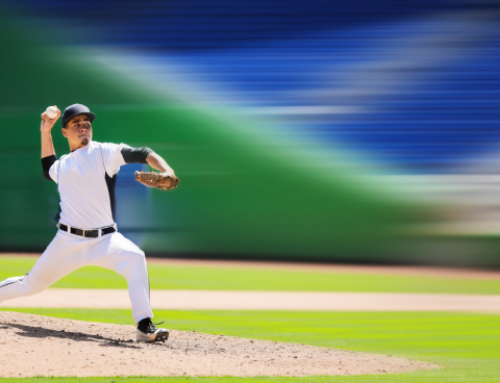How (and Why) to Use Weighted Baseballs
Weighted baseballs are a training tool that coaches and players seem to either love or hate. Many coaches swear by them, but others do not want their players to get anywhere near them.
I’m in favor of using weighted baseballs for training—when they’re used properly and with other drill work, not exclusively.
For Hitters
Using weighted baseballs for hitting drills can be effective, especially if you have players who have trouble finishing their swing. It can also be a way to reinforce good extension and follow-through, and getting your hands through the zone.
Soft Toss: Start this staple drill using regular baseballs. Have a partner feed you from the front or from the side for eight to 10 reps. (I prefer front toss because it’s more like a real game situation.)
Next, take the same number of swings using weighted baseballs. Feel the difference in your swing at the point of contact and your follow-through when hitting each type of baseball. To successfully drive the baseball, you will not be able to stop at contact.
Repeat the rotation between regular and weighted baseballs as necessary.
For Pitchers
Many pitchers are able to add velocity using weighted baseballs, but those who have developed poor throwing mechanics risk injury.
If you are physically able to handle the heavier ball, by all means, have at it. But give it time. It takes about six weeks of training with weighted balls to see a difference.
Do-It-Yourself Weighted Baseballs
You can buy a weighted baseball for $20 to 30, but why spend the money when you can easily make your own? Take a dozen baseballs (or however many you like) and soak them in water overnight. This will get them to about 12 ounces. Leave them in longer for a heavier ball, or less time for a lighter ball.
You can also use weighted baseballs with drills from these articles:
RECOMMENDED FOR YOU
MOST POPULAR
How (and Why) to Use Weighted Baseballs
Weighted baseballs are a training tool that coaches and players seem to either love or hate. Many coaches swear by them, but others do not want their players to get anywhere near them.
I’m in favor of using weighted baseballs for training—when they’re used properly and with other drill work, not exclusively.
For Hitters
Using weighted baseballs for hitting drills can be effective, especially if you have players who have trouble finishing their swing. It can also be a way to reinforce good extension and follow-through, and getting your hands through the zone.
Soft Toss: Start this staple drill using regular baseballs. Have a partner feed you from the front or from the side for eight to 10 reps. (I prefer front toss because it’s more like a real game situation.)
Next, take the same number of swings using weighted baseballs. Feel the difference in your swing at the point of contact and your follow-through when hitting each type of baseball. To successfully drive the baseball, you will not be able to stop at contact.
Repeat the rotation between regular and weighted baseballs as necessary.
For Pitchers
Many pitchers are able to add velocity using weighted baseballs, but those who have developed poor throwing mechanics risk injury.
If you are physically able to handle the heavier ball, by all means, have at it. But give it time. It takes about six weeks of training with weighted balls to see a difference.
Do-It-Yourself Weighted Baseballs
You can buy a weighted baseball for $20 to 30, but why spend the money when you can easily make your own? Take a dozen baseballs (or however many you like) and soak them in water overnight. This will get them to about 12 ounces. Leave them in longer for a heavier ball, or less time for a lighter ball.
You can also use weighted baseballs with drills from these articles:












